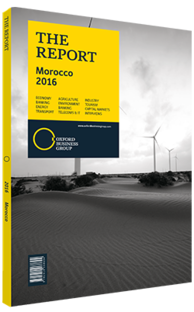Mohamed Benouda, CEO, SNTL Group: Interview

Interview: Mohamed Benouda
How would you rate Morocco’s transport and logistics performance?
MOHAMED BENOUDA: In the last 15 years Morocco’s transport and logistics infrastructure has developed significantly. Traveling to and within Morocco has become easier. Morocco’s major airports in Casablanca, Marrakech and Tangiers facilitate international flows of goods and people and have responded to increasing numbers. Additionally, more than 20 small airports interconnect the country. With about 2000 km of new roads constructed every two to three years, Morocco’s road growth rate has largely kept up with the country’s main consumption and production centres. Morocco also boasts Tanger-Med, which handles about 3m containers per year and is one of the largest ports in the Mediterranean. Buttressed by Jorf Lasfar Port and with plans to further develop deep-water and southern ports, Morocco is a significant regional hub. The arrival of a high-speed rail service to Morocco has also given the country a competitive edge, being the first African country to develop one. This service will make it possible to travel from Kenitra to Tangiers in just 47 minutes.
The improvement of Morocco’s ranking according to the World Bank’s Logistics Performance Index (LPI) is a testament to Morocco’s success in improving its logistics infrastructure. Morocco’s LPI ranking increased from 94 in 2007 to 62 in 2014. Yet challenges remain to further improve its logistics performance, and logistics companies will need to offer integrated logistics support that ensure traceability and reduce delays. They must expand the supply of high-value-added services like supply chain finance and fully take advantage of technological advances.
To what extent are import delays a challenge?
BENOUDA: Delays have been a challenge in recent years, but actions taken by the National Ports Agency should shorten these delays. For example, PORTNET provides a paperless, digitised platform that allows for a free flow of import-related documentation. Also, Marsa Maroc, Morocco’s main port operator, has gone from two to three shifts, which have reduced physical wait times. Thus, delays which used to take up to 15 days now no longer exceed five.
What factors affect the cost of local distribution?
BENOUDA: Firstly, the inability to achieve full truckloads increases distribution costs. In some regions delivery trucks are half-empty. Distribution flows are fragmented as many small and medium-sized enterprises have their own warehouses and fleets. Secondly, a high return rate also increases distribution costs. The majority of Morocco’s goods emanate from Casablanca, and as a result, transporters must bear the cost of returning to Casablanca with empty truckloads. Finally, local distribution costs are subject to warehousing costs, which are influenced by labour and technological productivity. Across these factors, Morocco has been able to optimise costs. A review of tenders held by multinational importers will show that distribution costs fall about every three years.
How is urban congestion being tackled?
BENOUDA: Royal initiatives have prompted the review of Moroccan urbanisation, including challenges associated with transit and traffic jams. In 2014 King Mohammed VI launched the Greater Casablanca Development Plan. One of the plan’s axes focuses on improving mobility in the region by developing tramways, urban villages and parking garages, among others. Rabat, Marrakech, Tangiers and Kenitra will also tackle urban congestion through regional plans and projects. Moreover, the Moroccan Agency for Development Logistics has also proposed legal and regulatory reforms aimed at better managing the transit of trucks in the city by designating approved transit times in the early mornings and late evenings.
You have reached the limit of premium articles you can view for free.
Choose from the options below to purchase print or digital editions of our Reports. You can also purchase a website subscription giving you unlimited access to all of our Reports online for 12 months.
If you have already purchased this Report or have a website subscription, please login to continue.

